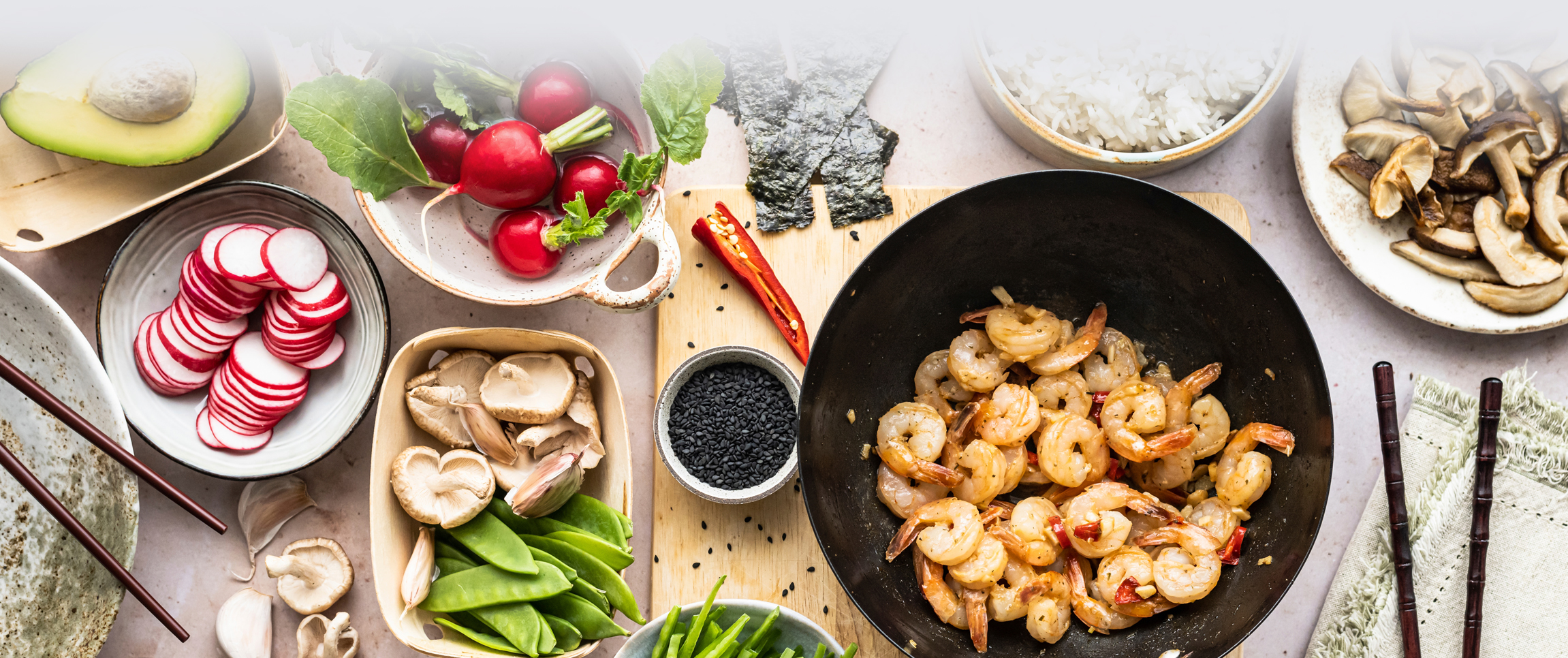If 2022 was the year of the indulgent butter board, what's behind door number 2023? The biggest overarching food trends for the upcoming year revolve around sustainability in all forms, a boost of healthy superfoods specifically from the sea, and a desire to be transported to other lands via the plate. Find out how your establishment can easily and efficiently jump on these trends, without making drastic or costly changes.
Environmental Impact
Whether it's swapping plastics for compostable packaging or being cognizant of the environmental impact of ingredients being sourced, 2023 is the year bars and restaurants will really have to dial in the details on sustainability. As consumers grow more and more climate-conscious, they will choose to spend their money at places that align more with their beliefs and practices.
Perhaps the topic most will have their eyes on this year is seafood. Public awareness of a need for sustainable seafood is at an all-time high. Restaurants should re-evaluate their menus with an eye on seafood that is responsibly sourced. Advertise your sourcing stories and standards on social media and put sourcing designations where appropriate on your menus. Your diners will definitely pay up for a meal that is ethically sourced.
Another trending practice cuts down on waste by using upcycled ingredients — byproducts from current inventory that can be molded into something else delicious. Think cookies made from items like oat milk; pretzel bites made from excess grains; gelato infused with potato peels; pickled fruit peels...yesterday's trash could now be today's crème brûlée.
Sea Superfoods
Dried sheets of nori have been in the snack pack for a few years now, but 2023 promises to bump up the popularity of a huge variety of edible sea plants. As consumers focus more on health and sustainability, they're recognizing the benefits of these mineral-rich, nutritious superfoods of the sea. The good thing is they're affordable, sustainable, and easy to incorporate in a multitude of ways on your menu.
For one, kelp is recognized as a sustainable superfood that absorbs carbon in the atmosphere. Dry into a crispy topper for your Asian dishes, turn into kelp noodles for an awesome gluten-free option, or use as the perfect briny substitute for fish sauce in your vegan dishes.
"Green Salt" is an up-and-coming plant-based salt alternative that has 50% less sodium than table salt. It's made by dehydrating a sea plant called salicornia (AKA sea beans) and grinding into a powder that can add not only a saltiness, but umami to your dishes as well. The fact that it naturally contains chlorophyll and vitamin B3, among others, will win over those health-conscious customers. Going green has never been easier than right now.
Filipino Food
Instagram's 2023 Trend Report claims "cultural curiosity" as the top driver for food trends in the year ahead. The report also concluded that nearly 70% of Gen Z social media users would like to try food from another culture. As traditional dishes and spices from Southeast Asian countries — specifically Singapore and Vietnam — gain traction this year, no cuisine is blowing up in the U.S. as much as that from the Philippines.
Filipino restaurants used to be limited to communities where there were large Filipino immigrant populations. Now, with younger generations of Filipino Americans entering the industry, restaurants are popping up all over the country, offering everything from popular street food to fine dining. Clearly you're not going to completely upend your menu, but you can give a nod to the cuisine — and the trend — by incorporating common ingredients like ube, a versatile purple tuber that can be used in savory or sweet applications.
Make an ube custard for dessert or try Ube Pandesal — pillowy little buns filled with cheese that can be a delicious and fun appetizer, perfect for people who want to try out the cuisine but not commit to an entire dish. For the more adventurous, offer a special that features a traditional dish like Chicken Inasal. It's grilled chicken, something most diners are comfortable with, but the Filipino version uses the whole animal — grilling not only the breasts and thighs. Served with garlic rice and orange oil, this dish will grab the diners who want authenticity AND sustainability in their food (hello, zero waste!)



